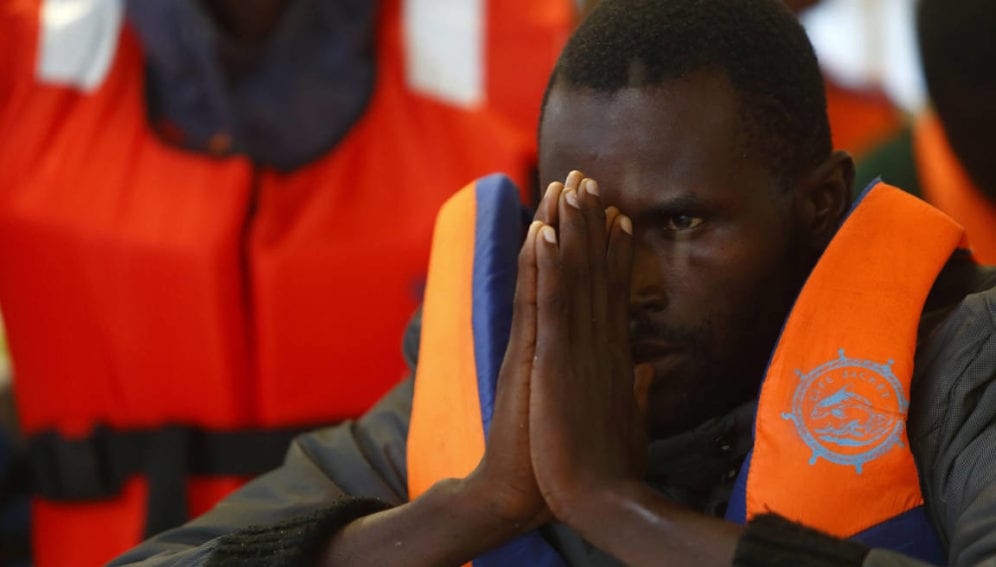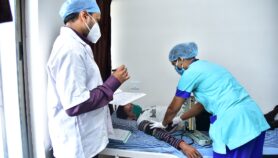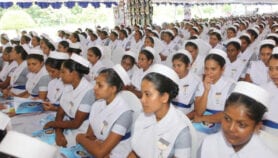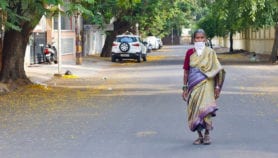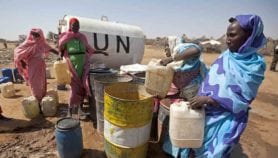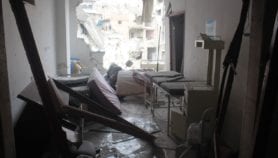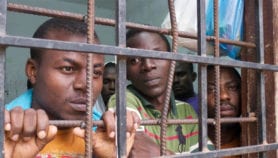By: Imogen Mathers
Send to a friend
The details you provide on this page will not be used to send unsolicited email, and will not be sold to a 3rd party. See privacy policy.
Just over a year ago, in October 2013, two boats carrying refugees and migrants from North Africa to Europe capsized off the Italian island of Lampedusa, killing over 500 passengers.
The tragedy prompted the Italian navy to launch a search and rescue operation called Mare Nostrum (Our Sea), which has helped rescue more than 150,000 migrants attempting the dangerous Mediterranean crossing in the past year. [1]
But the initiative was closed in early November after the European Union failed to respond to Italy’s call for more funds — a decision that sparked Europe-wide debates and was severely criticised by human rights organisations. [2] The operation replacing it, codenamed Triton, has just a third of Mare Nostrum’s budget and focuses on ‘border management’ up to 30 miles off Italy’s coast rather than refugee rescue across the Mediterranean.
But while Italy has scaled back its operations, a new NGO based in Malta has been assisting migrants with the help of cutting-edge technology: Schiebel camcopter drones. “We are using equipment for humanitarian reasons that — up to now — has been used almost exclusively by the military,” says Martin Xuereb, the NGO’s director.
The NGO, called the Migrant Offshore Aid Station (MOAS), was launched last April by Christopher and Regina Catrambone, two entrepreneurs based in Malta who committed US$2.64 million of their own funds to the project. Since then, MOAS has been using the military grade camcopters to locate migrants in trouble on the sea, and then either alert the relevant authorities or dispatch its own rescue boats. So far 3,000 people — mainly Syrian and Eritrean asylum seekers — have received help from MOAS.
“We feel this is a global problem that should be addressed globally, and not only by nation-states or international organisations; we have a moral responsibility to ensure that nobody dies at sea,” Xuereb tells me.
The camcopters MOAS uses are ideally suited for their task. Unlike most unmanned aerial vehicles, which use conventional long runways, the camcopters take off vertically, making them easy to deploy at sea and in rough terrain.
“The drones allow you to make informed decisions and to identify boats in distress and carry out rescues much quicker. In the long-run it is also much cheaper [than piloted search and rescue operations] because all you need is the drone, a software platform and two operators.”
“The drones allow you to make informed decisions and to identify boats in distress and carry out rescues much quicker. In the long-run it is also much cheaper.”
Martin Xuereb, MOAS
On one six-hour deployment the drones can cover over 2000 square kilometres of sea. They collect sonar, thermal and night images and then feed imagery back to the MOAS aid station. When this identifies migrants in distress, it passes the information to the relevant public rescue authorities and, if necessary, sends out emergency teams to provide care and assistance.
Xuereb adds that there is potential for MOAS’s approach to help migrants in other areas — such as the Caribbean or the seas around Australia, where migrants often get into trouble. MOAS has had regular discussions with the UN Refugee Agency (UNHCR) and is currently in Geneva attending the high commissioner’s dialogue on sea rescue, he says.
When I ask him about the European Union disputes on sea rescue, Xuereb responds that “The solution does not lie in pointing fingers.” However, he says “The winding down of Mare Nostrum, a laudable humanitarian mission, means there will be fewer vessels able to conduct timely and effective rescues — the presence of MOAS in 2015 therefore becomes imperative.”
MOAS is temporarily suspended due to the small numbers of migrants who attempt to cross the sea in winter, and due to a lack of money. It is fundraising to ensure it can resume rescue operations in March, when the people smuggling season on the Mediterranean begins.
Imogen Mathers is a writer/producer at SciDev.Net. @ImogenMathers
References
[1] UNHCR concerned over ending of rescue operation in the Mediterranean (UNHCR, 17 October 2014)
[2] Europe must act to save lives at sea (Amnesty International and Human Rights Watch, 9 October 2014)


